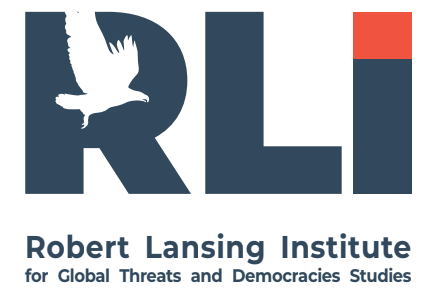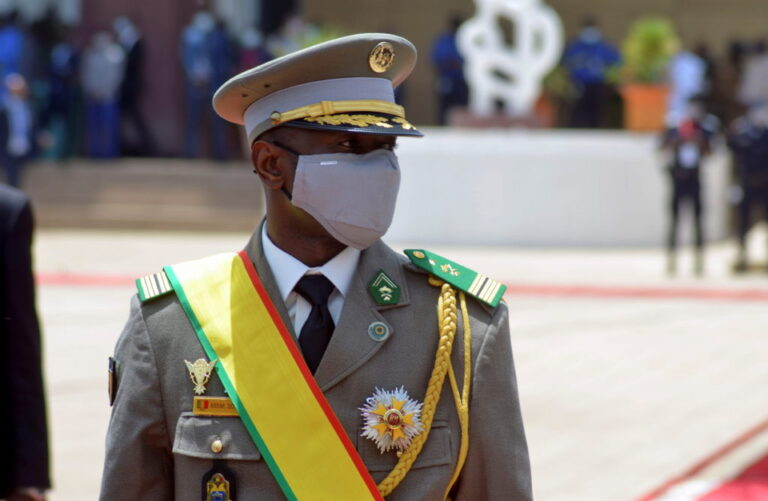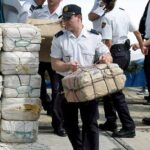Russia, entering Mali under the pretext of “assistance in overcoming the fuel crisis,” is in fact constructing a new infrastructure of influence that directly undermines U.S. interests in the Sahel. Its key leverage points—control of logistical corridors, joint operations with local forces, and access to intelligence—provide the Kremlin with new footholds that displace American security programs and increase the Malian government’s dependence on Russian power. This manoeuvre transforms a temporary crisis into a long-term geopolitical lever, enabling Moscow to shape the political-security agenda, bypass sanctions through regional routes, amplify anti-Western narratives, and consolidate its position in a region where the United States has invested in stability for decades. The mechanism is simple and dangerous: the consolidation of the “Africa Corps” is turning Mali from a Western partner into a proving ground for Russian influence, from which the Kremlin can expand its network across the Sahel and complicate the American presence on the continent.
Russia exploited Mali’s fuel crisis as an opportunity to penetrate areas previously dominated by U.S. security programs, transforming a technical issue of fuel delivery into a strategic instrument of influence. The deployment of Russian units along border corridors with Senegal and Côte d’Ivoire has given Moscow not only physical control over these routes but also access to operational information on militant movements, convoy logistics, and the internal priorities of Mali’s armed forces headquarters. Through joint patrols, convoy escorts, and border-area monitoring, Russian structures gained the ability to decide which regions require “clearing operations,” which missions should take priority, and where government forces should concentrate units—areas of decision-making that were previously integrated with American assistance and intelligence support. The Kremlin is gradually integrating infrastructure built with U.S. and EU participation into its own operations, turning it into a source of data for Russian analysts and a channel of influence on the Malian transitional government’s decisions.
As a result, Washington is losing not only operational access and partnership mechanisms but also its capacity to shape the regional security order. A country that relied for decades on American support is now making political statements emphasizing its strategic reliance on Moscow. In this configuration, the fuel crisis becomes a tool that allowed Russia to anchor a point of influence at the heart of the Sahel, weaken American positions, and exploit instability to build its own network of control in one of the most vulnerable theatres of African geopolitics.
Moscow used disruptions in fuel supplies to penetrate security segments previously dominated by American missions, gradually tying Mali’s logistical processes to itself through control over major transport corridors. These new Russian positions opened access to data on the movement of armed groups and on decisions governing Mali’s allocation of forces in western and southern regions. This access allows the Kremlin to reshape the Malian perception of threats and push American analytical influence into the background.
The presence of the “Africa Corps” is central to this process. It escorts convoys and participates in route checks that were previously coordinated with U.S. forces and partners. The “Africa Corps” controls specific zones where trade, smuggling, and militant activity intersect, enabling Russia to craft its own interpretation of events and impose it on the Malian government.
Russian structures are increasingly integrated into the operations of the Malian Armed Forces, influencing mission priorities and logistical decisions that were previously made with Western advisers. This allows the Kremlin to establish the rules of access to territories and intelligence that are critical for regional stability—while simultaneously cutting off U.S. intelligence from obtaining a complete picture of developments in key districts.
The Malian government is now making increasingly frequent public statements highlighting the value of Russian assistance, which politically works against the United States. When a foreign partner becomes irreplaceable, the government naturally shifts into a mode of dependency—and this is precisely the model Russia is constructing in Mali. This strengthens Moscow’s influence in areas that go far beyond logistics.
Russia’s influence in Mali rests on a coalition of military elites, security institutions, transitional political actors, and business–criminal intermediaries who see Moscow as a source of power, protection, and regime survival.
This cooperation is not ideological; it is driven by opportunism, personal security, anti-French sentiment, and pursuit of autonomy from Western oversight.
1. Colonel Assimi Goïta – Head of the Junta
(The Strategic Partner)
Role:
- President of the Transition since 2021 coup.
- Final decision-maker on defense, intelligence, alliances, Russian deployments.
Why he cooperates with Russia:
- Regime Survival:
Russia guarantees personal protection and coup-proofing of the junta.
The Africa Corps (ex-Wagner) serves as a Praetorian Guard. - Anti-French sentiment:
Goïta frames Russia as the alternative to France, which Malian society blames for years of insecurity. - Zero-conditions support:
Russia does not demand human-rights compliance or reforms, unlike the U.S. and EU. - Power consolidation:
Russian support allows him to bypass ECOWAS pressure and internal rivals.
In short:
Goïta sees Russia as the raw power that keeps him in office.
Colonel Sadio Camara – Minister of Defense
(Moscow’s closest ally inside the cabinet)
Role:
- Architect of Mali–Russia military cooperation
- Main channel for Russian arms contracts, trainers, and “Africa Corps” deployments
Why he cooperates:
- Personal ties with Moscow:
Trained in Russia; maintains direct line to Russian MoD and GRU. - Access to weapons:
Russia delivers helicopters, drones, armored vehicles, munitions — no Western conditions attached. - Institutional rivalry with pro-Western officers:
Russian backing strengthens Camara’s faction within the military hierarchy. - Financial incentives:
Arms deals and fuel contracts create opaque revenue streams.
He is widely viewed as Russia’s number-one political asset in Mali.
Colonel Alou Bô – Chief of Staff / Senior Military Leadership
(Operational cooperation)
Role:
- Coordinates joint operations with Africa Corps
- Signs off on patrols, logistics escorts, and “clearing operations”
Why he cooperates:
- Operational dependence:
Mali’s army lacks ISR, heavy fire support, logistics, and transport capacity.
Russia fills these gaps. - Access to intelligence:
Russian drones and surveillance systems provide data Mali could not otherwise access. - Territorial control:
Russian units help secure western and southern corridors, which protect Bamako’s political center.
This group values Russia for military utility, not ideology.
Malian Intelligence (DGSE) Factions
(Information-sharing relationship)
Role:
- Shares intelligence with Russian operatives
- Receives training and technology
Why they cooperate:
- Tools of surveillance and repression:
Russia provides SIGINT, mobile interception, and interrogation tools.
These are used primarily against opposition groups. - Autonomy from Western scrutiny:
The U.S. and EU previously placed limits on intelligence-sharing.
Russia does not. - Internal rivalry:
Pro-Russian officers use Moscow’s support to sideline pro-Western analysts.
DGSE cooperation helps Russia embed itself in Mali’s decision-making core.
Transitional Civilian Politicians
(Political amplification and media cooperation)
Actors include:
- Prime Minister Choguel Maïga
- Ministers in information, communication, and administration portfolios
- Pro-junta political collectives
Why they cooperate:
- Anti-Western narrative:
Russia provides media products, influencers, and social campaigns that bolster nationalist legitimacy. - Domestic political benefit:
Criticizing France and praising Russia is popular among urban youth and civil servants. - State media dependence:
Russian channels supply content, training, and propaganda strategies.
This group acts as Russia’s political megaphone inside Mali.
Business Elites, Fuel Intermediaries, and Smuggling Networks
(Economic enablers of Russian presence)
Why they cooperate:
- Control of fuel imports:
Russia stepped in during the fuel crisis; businessmen tied to junta members profit from new contracts. - Smuggling corridors:
Russia exploits gold, fuel, and transport networks in:- Kayes
- Sikasso
- Gao
- Mopti
These groups benefit from Russian protection and access to markets.
- Sanctions evasion:
Mali becomes a hub for Russian:- gold laundering
- fuel rerouting
- dual-use goods
- currency operations
Economic actors support Russia because they benefit from a parallel economy created by Russian involvement.
Why These Groups Cooperate — Summary of Motives
A. Regime Survival
Russia protects the junta from coups, ECOWAS pressure, and internal dissent.
B. Security Dependence
Russia provides air assets, firepower, and intelligence the West no longer offers.
C. Political Legitimacy
Anti-French and anti-Western messaging is a powerful domestic tool.
D. Financial Incentives
Opaque arms deals, fuel contracts, mining rights, and smuggling profits enrich elites.
E. Strategic Autonomy From the West
Leaders resent Western conditionality on governance, corruption, and human rights.
F. Russian Strategy Matches Elite Interests
The Kremlin offers:
- protection without scrutiny
- resources without reform demands
- political cover without accountability
This aligns perfectly with the interests of coup-born regimes.
The actors cooperating with Russia in Mali form a coalition of military rulers, intelligence factions, political propagandists, and profit-seeking networks.
They are united by a single calculation:
Russia strengthens their power — and weakens Western oversight.
For Moscow, this coalition transforms Mali into a strategic hub for projecting influence across:
- Niger
- Burkina Faso
- Guinea
- Mauritania
- Central African Republic
- the Gulf of Guinea
From here, Russia is building a new anti-Western architecture in the Sahel.
2. Core Actors and Loyalty Assessment
1) Colonel Assimi Goïta – Head of Junta
Loyalty to Russia: High → Very High
- Drivers:
- Regime survival (personal protection, coup-proofing).
- Russia as main guarantor against ECOWAS, domestic rivals, jihadists.
- Anti-French narrative as core legitimation strategy.
- Risks for West:
- Will veto any return of U.S./EU missions.
- Will give Russia long-term basing and intelligence access.
- Likely to politically echo Russian positions at AU, UN, Sahel formats.
- Watch indicators:
- Long-term basing agreements;
- Constitutional changes entrenching the junta;
- Public statements framing Russia as “strategic ally” and the West as “neo-colonial.”
2) Colonel Sadio Camara – Minister of Defense
Loyalty to Russia: Very High (primary Russian asset)
- Drivers:
- Training/education links in Russia.
- Personal role as architect of Mali–Russia military partnership.
- Direct benefits from arms + fuel contracts.
- Risks for West:
- Will systematically block or sabotage Western defense initiatives.
- Likely to promote Russian doctrines, weapons, and advisors deep inside Mali’s security sector.
- High risk of facilitating Russian access to regional security fora and ops (Burkina, Niger).
- Watch indicators:
- Exclusive Russian armament deals.
- Expansion of Africa Corps footprint.
- Public attacks on Western “interference” in military affairs.
3) Africa Corps (ex-Wagner) Leadership In-Country
Loyalty to Russia: Absolute (commanded directly by Moscow)
- Drivers:
- Chain of command to Russian MoD/GRU.
- Financial stake in Russian mining/logistics concessions.
- Risks for West:
- Direct instrument for targeted killings, repression, disinformation and covert ops.
- Can be projected outward into Niger, Burkina Faso, Guinea, coastal states.
- High probability of involvement in trafficking (gold, fuel, possibly drugs) to finance networks.
- Watch indicators:
- New bases, airstrips, depots.
- Participation in clearing operations against regime opponents.
- Integration with Malian elite units.
4) Mali Armed Forces HQ (collective senior command)
Loyalty to Russia: Medium → High (factional)
- Drivers:
- Material dependence (air support, ISR, artillery, logistics).
- Need for a powerful external patron since Western missions withdrew.
- Career incentives for pro-Russian officers.
- Risks for West:
- Operational plans shaped by Russian analysis rather than Western intel.
- Regions of interest for U.S./EU (borders, migration, jihadist corridors) may be deprioritized.
- Growing doctrinal alignment (Russian-style COIN, disregard for civilian casualties).
- Fragmentation:
- Some mid-ranking officers remain skeptical, remember cooperation with France/US.
- Over time, promotions will likely favor pro-Russian cohort → risk drifts toward High.
5) DGSE (Malian Intelligence) – Pro-Russian Factions
Loyalty to Russia: High (in key nodes)
- Drivers:
- Access to Russian SIGINT tools, training, and surveillance tech.
- Use of Russian support for domestic repression (opposition, journalists, Tuareg, Islamists).
- Risks for West:
- Intelligence flows increasingly one-way: to Moscow, not to Western partners.
- Russian narratives about “threats” become the default lens in Bamako.
- High risk that Russian services gain compromising material on officials, making pivot away from Moscow harder.
- Watch indicators:
- Joint Russia–DGSE centers, tech transfers, new “counter-terrorism” units.
- Arrests, disappearances, or smear campaigns targeted at pro-Western figures.
6) Fuel / Logistics / Business Elites
Loyalty to Russia: Medium (transactional but sticky)
- Drivers:
- Profit from Russian fuel, transport, and mining deals.
- Access to smuggling corridors under Russian “protection.”
- Ability to launder Russian funds and evade sanctions.
- Risks for West:
- Economic backbone of Russian presence (fuel, gold, logistics corridors).
- Can finance pro-Russian media, militias, and political campaigns.
- Used as plausible-deniability cutouts for Russian operations in the region.
- Watch indicators:
- Sudden enrichment of certain business clans.
- Concessions in mining, fuel depots, logistics hubs to Russia-linked entities.
- Emergence of Malian companies acting as fronts for sanctioned Russian firms.
7) Pro-Junta Politicians and Media Ecosystem
(e.g. Choguel Maïga, pro-regime talk show hosts, influencers)
Loyalty to Russia: High (ideological + instrumental)
- Drivers:
- Political benefit from anti-French / anti-Western mobilization.
- Direct or indirect support from Russian media, troll farms, and info-ops.
- Risks for West:
- Sustained narrative: “Russia = sovereignty, West = neocolonialism.”
- Public opinion hardened against return of Western cooperation.
- Spillover: narratives exported into Niger, Burkina, Guinea, even francophone West Africa at large.
- Watch indicators:
- Synchronization of Malian narratives with Russian channels (RT, Telegram networks).
- Attacks on AU/ECOWAS if they criticize Moscow.
- Shrinking space for independent or pro-Western voices.
8) Local Commanders / Provincial Authorities (Kayes, Gao, Mopti, Sikasso, etc.)
Loyalty to Russia: Low → Medium (opportunistic, area-based)
- Drivers:
- Immediate security needs (firepower against jihadists).
- Access to patronage via Bamako.
- Fear of central regime more than love of Russia.
- Risks for West:
- If Russian-backed operations bring visible short-term security, local elites may become de facto loyal to Moscow.
- Risk of being co-opted into criminal networks under Africa Corps protection (gold/fuel/drug corridors).
- Watch indicators:
- Local praise for Russian units vs. criticism of former Western partners.
- Provincial deals (security-for-resources) involving Russian-linked actors.
3. Aggregate Risk Picture
- Very High / Core Russian Bloc:
- Sadio Camara, Africa Corps leadership, key Russian advisors.
- These actors will not flip; they are structurally tied to Moscow.
- High / Strategic Partners:
- Assimi Goïta, pro-Russian DGSE factions, key pro-junta politicians.
- They could theoretically rebalance if regime survival required it, but current trajectory is deepening dependence on Russia.
- Medium / Swing Space:
- Armed Forces HQ (collective), business/fuel elites, local commanders.
- This is where Western policy could still compete, if leverage (sanctions, alternative security, economic incentives) is used smartly.
- Low / Residual Western Potential:
- Few remaining technocrats, some officers trained in the West, segments of civil society (not in your map, but relevant).
- They are currently marginalized, but form the only realistic base for a future re-orientation.
Below is a clear, structured ASCII corruption & revenue-flow map showing how Russia extracts money from Maliand how Malian political–military elites benefit from Russian presence.
1. GOLD — Russia’s Main Cash Source in Mali
GOLD MINES (Kayes, Sikasso, Mopti)
│
▼
Local commanders influence extraction
│
▼
Africa Corps + DGSE secure sites
│
▼
Russian-linked companies receive “exclusive rights”
│
▼
Gold exported via:
• Dubai
• UAE free zones
• Turkey
• Sudan/Chad transit routes
│
▼
HARD CURRENCY → Russian MoD & Africa Corps → Russia’s war economy
Corruption gains in Mali:
- Colonels receive % of extraction
- Mining concessions exchanged for political loyalty
- Local militias allowed to operate in exchange for cooperation with Russians.
2. FUEL — The Entry Point for Russian Control
RUSSIA SUPPLIES FUEL
(via intermediaries + shadow traders)
│
▼
Malian elite business networks gain exclusive import rights
│
▼
Overpricing (30–120%) creates slush funds
│
▼
Revenue split:
• Malian junta leaders
• Russian business proxies
• Africa Corps logistics units
│
▼
Fuel distributed to:
• military bases
• mining corridors
• smuggling convoys
│
▼
Russia gains control of transport routes → power projection
3. ARMS DEALS — Largest Corruption Channel
RUSSIAN MoD
│
▼
Arms packages “sold” to Mali
(helis, drones, APCs, ammo)
│ ↑
│ │ U.S./EU systems replaced
▼ │
Malian MoD (Sadio Camara)
│
▼
Inflated contracts (200–800% markup)
│
▼
Side payments → Camara + Goïta circle
│
▼
Africa Corps integrates into operations
│
▼
Dependency created → Mali locked into Russian supply chain
4. SMUGGLING — Russia Uses Mali as a Hub
Transit corridors in:
• Kayes (Senegal border)
• Sikasso (Côte d’Ivoire & Burkina corridor)
• Gao/Ménaka (Niger corridor)
│
▼
Smuggling of:
• fuel
• gold
• timber
• migrants
• weapons
│
▼
Africa Corps provides:
• protection
• escorts
• border control
• bribes management
│
▼
Smugglers pay “protection tax”
(10–40% of cargo)
│
▼
Money → Russian units + Malian junta intermediaries
Smuggling is where Russian PMCs + Malian elites cooperate most intimately.
SANCTIONS EVASION & FINANCIAL NETWORKS
Russian front companies (Bamako, Kayes)
│
▼
Shell companies in:
• UAE
• Mauritius
• Turkey
• Niger/Burkina Faso
│
▼
Used for:
• laundering gold revenue
• importing sanctioned dual-use goods
• shipping fuel via opaque intermediaries
│
▼
Funds re-injected into:
• Africa Corps salaries
• Russian military procurement
• regime stabilization projects in Mali
WHO BENEFITS? (Power + Corruption Map)
RUSSIA
┌───────────────────────────┐
│ Kremlin / MoD / GRU │
└───────────────────────────┘
▲ ▲
│ │
Arms profits │ │ Gold & fuel revenue
│ │
▼ ▼
Africa Corps (PMC units)
│
Operational + financial dominance
▼
┌──────────────────────────────┐
│ Malian Junta (Goïta–Camara) │
└──────────────┬──────────────┘
│
▼
Business elites + smugglers
│
▼
Local commanders
· Russia profits most from gold, arms contracts, and smuggling protection fees.
· Malian junta elites enrich themselves through fuel imports and inflated military contracts.
· Africa Corps acts as the enforcement and extraction arm — securing mines, escorting convoys, collecting illicit payments.
· Corruption networks bind the junta to Moscow, making a pivot back to the U.S. nearly impossible without regime change.· Revenue flows finance both Russia’s war machine and the juntas in Mali, Niger, and Burkina Faso, creating a self-sustaining anti-Western bloc.

More on this story: Mali After the Arrests: Scenarios for Power, Instability, and Foreign Influence”
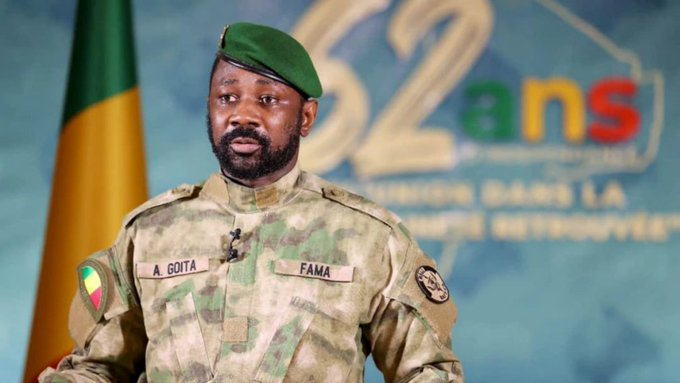
More on this story: Mali Junta Leader Gets Backing to Serve as President Until 2030

More on this story: Russia’s Influence Operations in Mali: Strategic Assessment
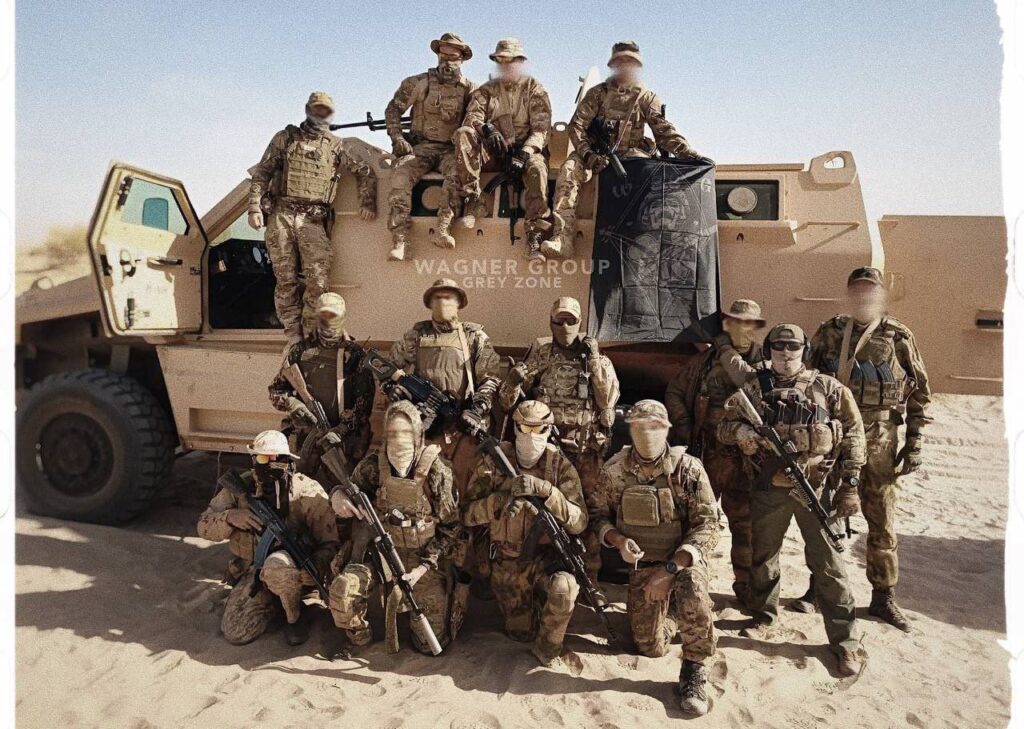
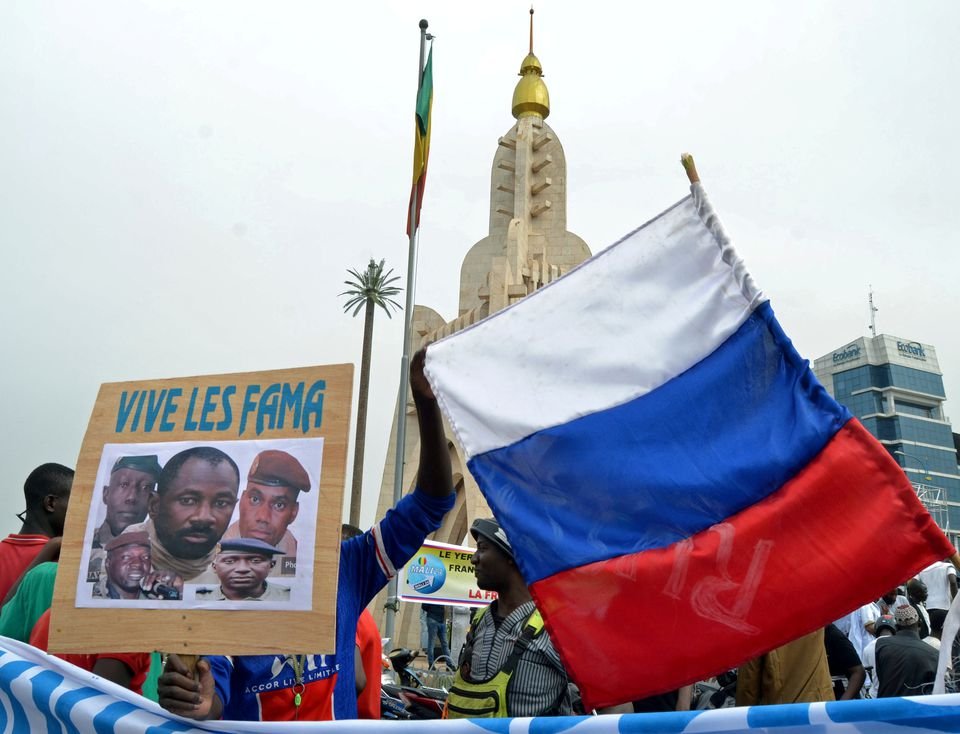
More on this story: Russia is countering the USA and EU states in Mali
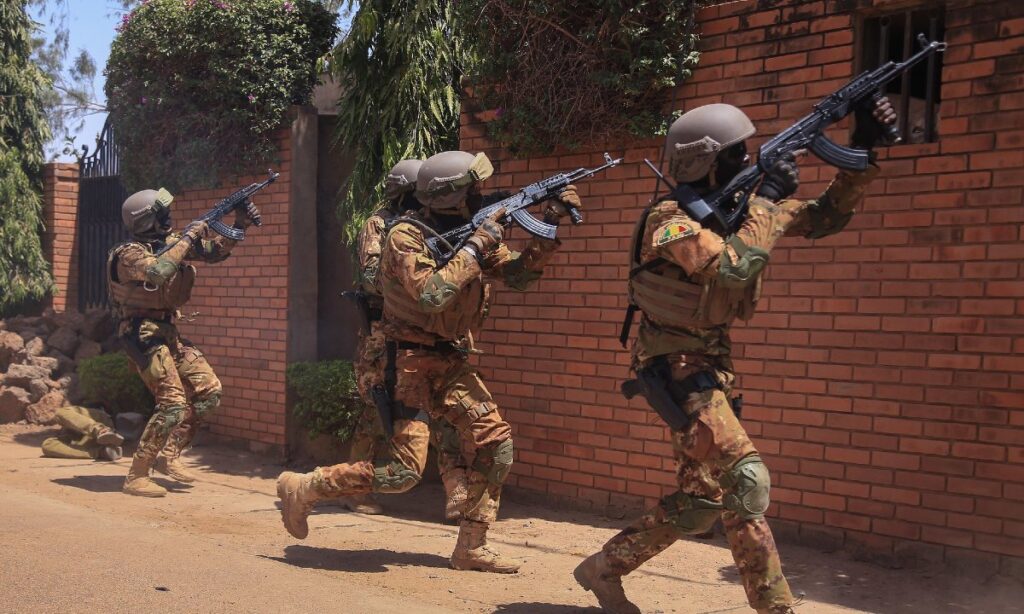
More on this story: The worsening insurgency and insecurity in Mali
